These straw rockets are very easy to make and great fun. You can make them plain or theme in different ways. We’ve made Pterodactyls and rockets!
They’re also a fantastic introduction to forces, gravity and trajectory!
Don’t forget I also have a book filled with rocket and space science experiments for kids. This IS Rocket Science is available from Amazon in the UK and bookstores in America.
Easy Straw Rocket STEM Challenge
There are two ways to make these: you can either use a wide straw as the rocket part ( sealed with tape at one end ) or use paper sealed at three ends so the open end fits over the straw.
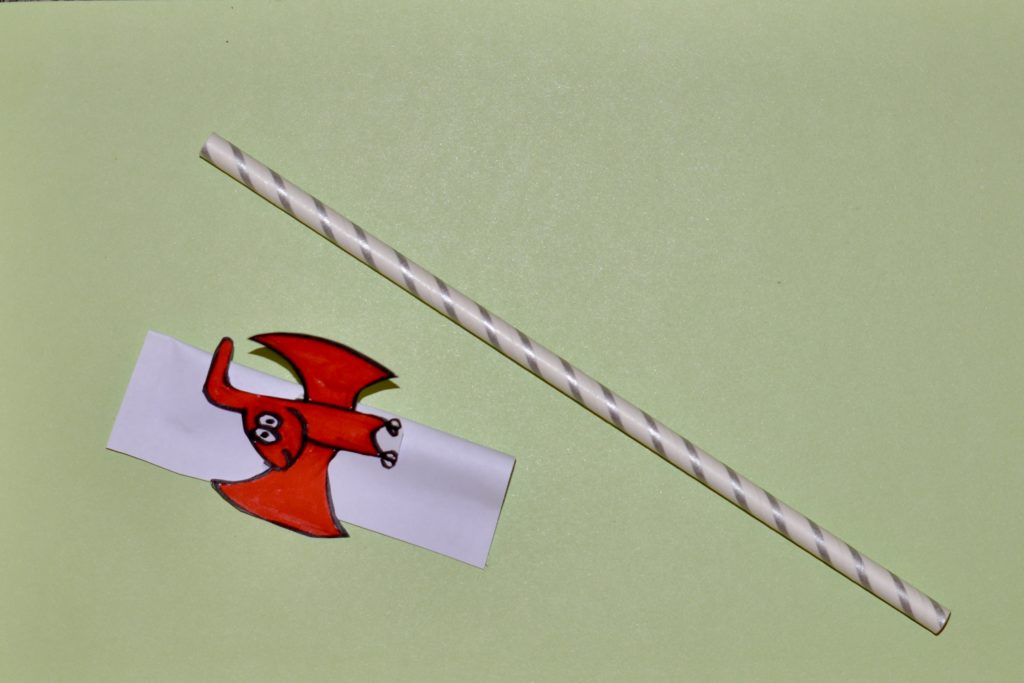
You’ll need
Paper Version
Straw
Paper
Tape
Straw Version
Normal Straw
Wide straw
Sellotape
Paper
Card
Paper clips
Felt tip pens
How to make a straw rocket
Paper version
Cut a small strip of paper, fold in half and seal the top and long side opposite the fold with tape.
This should fit loosely over the top of the straw.
Place it over the straw and blow, it should shoot into the air!
Decorate if you want!
Straw Version
Cut the wider straw, so you have a segment about one-third the length of the normal-width straw.
Completely seal one end of the wide straw with sellotape so no air can pass through it. Check this by blowing down the straw. Does any air escape?
Draw a picture of a rocket or other space object on a piece of paper and use sellotape (double-sided works best ) to attach to the wider straw.
Place the wider straw onto one end of the normal straw and blow!
Watch your rocket fly!
Try pointing the straw at different angles and blowing harder/less hard to see how the flight of the rocket changes.
Straw Rocket Instructions and Template
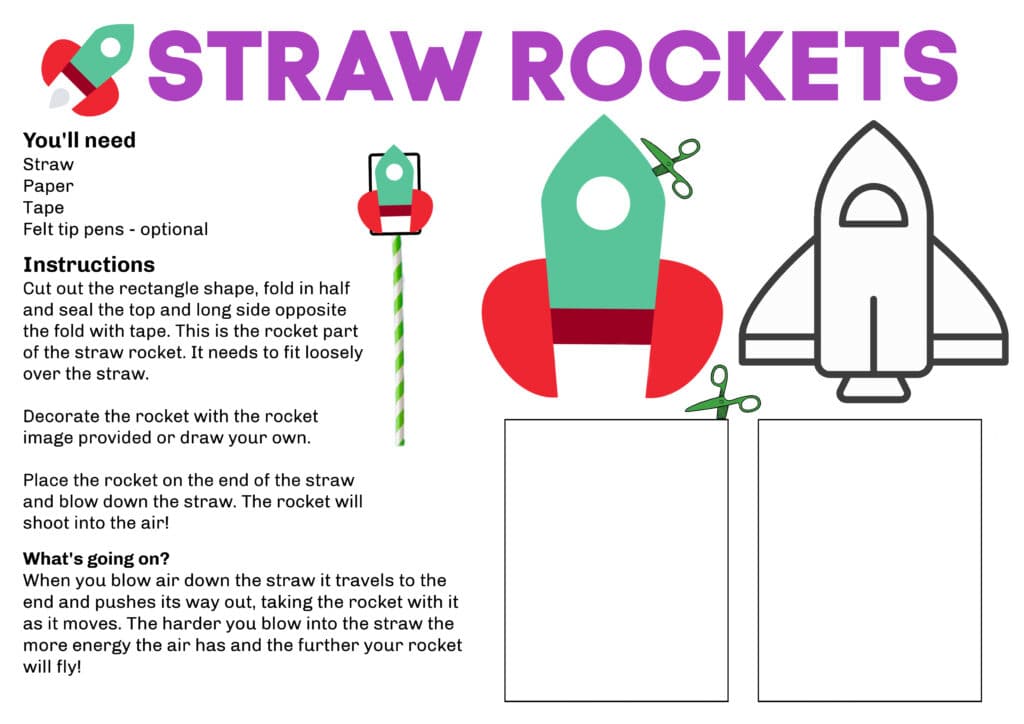
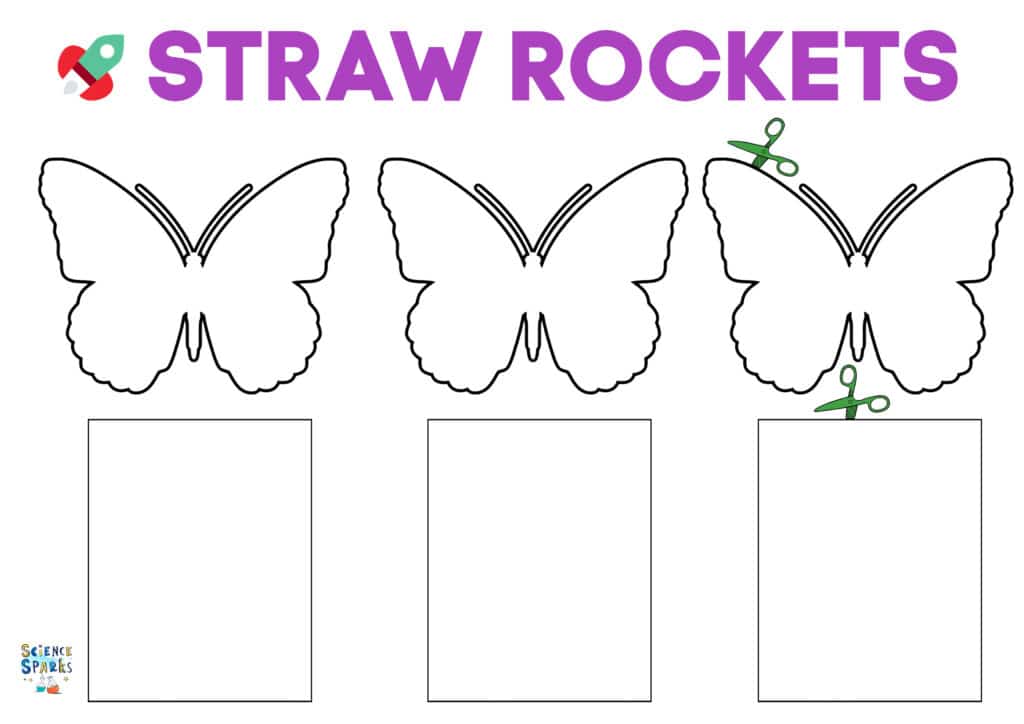
If you’d rather make flying butterflies than rockets, the tamplate above works well.
Why does this happen?
When you blow air down the straw, it travels to the end and pushes its way out, taking the rocket straw segment with it as it moves. The harder you blow into the straw, the more energy the air has and the further the rocket will fly!
Change the trajectory
Find out what happens to the straw rocket if you point it straight up. How far does it fly? Does it fly differently if you point it horizontally?
What’s going on?
Two forces are acting on the straw rocket. Gravity is pulling it down while the force from the air blown down the straw is pushing it forward. These two forces combined give a curved movement. A real rocket needs to overcome the gravitational force downwards.
Straw Rocket Challenge – Extension Ideas
Add some weight to the straw rocket and see if that affects how far it travels. You could use cardboard instead of paper for the rocket or add paper clips!
Make lots of different themes for your straw rockets. Red Ted Art has some beautiful summer themed straw shooters that work in the same way.
More Rocket Science for Kids
If you’ve got kids who love space and rockets, you might like our easy bottle rocket experiment , film canister rocket or squeezy bottle rockets!
For younger children, I’d recommend a rocket mouse! These are great fun for little ones, and bigger siblings might enjoy getting involved, too!
Contains affiliate links
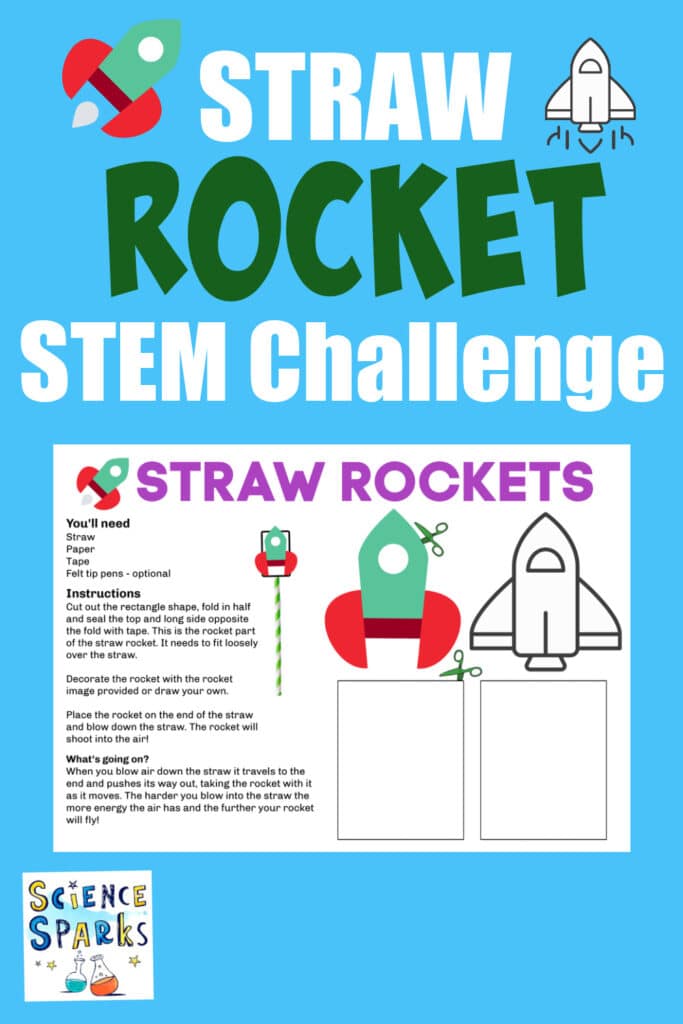
Last Updated on January 29, 2024 by Emma Vanstone

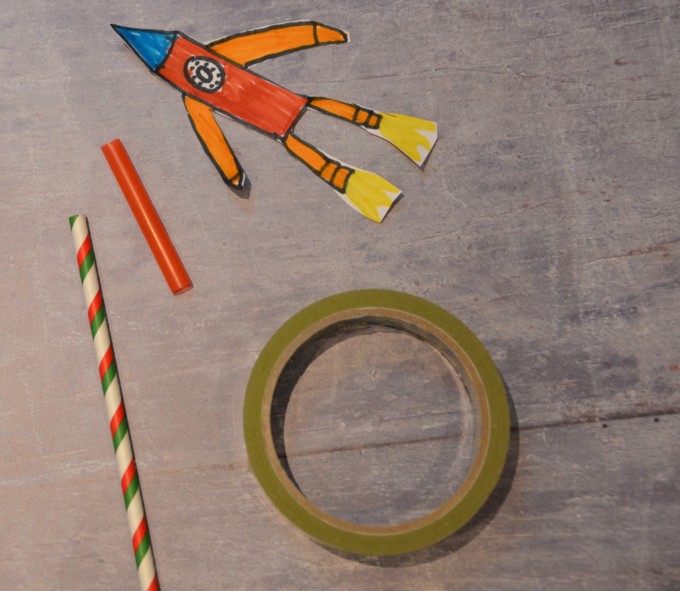

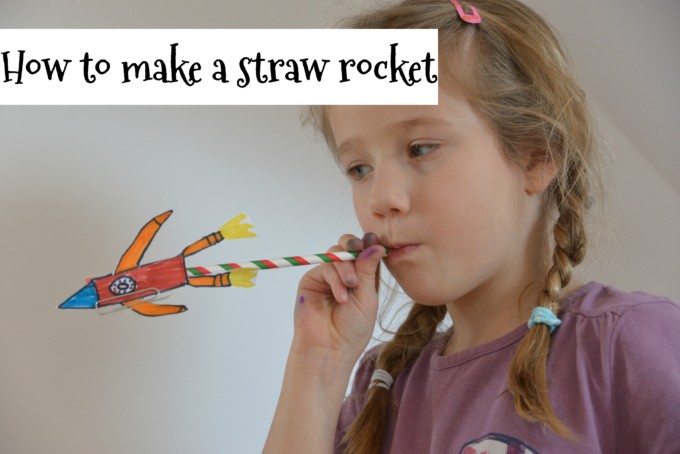
Leave a Reply